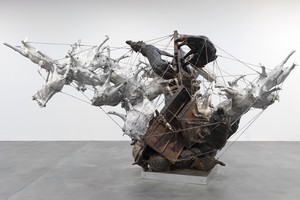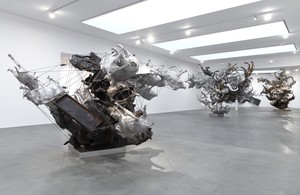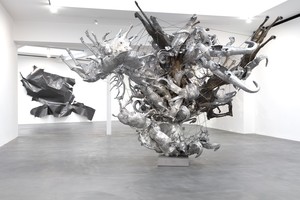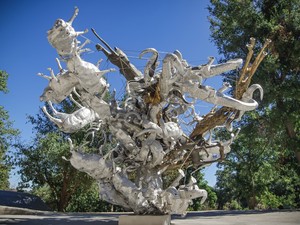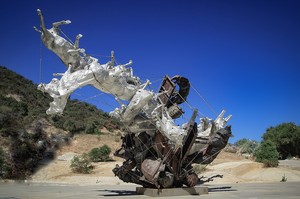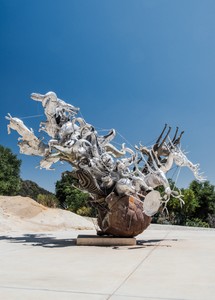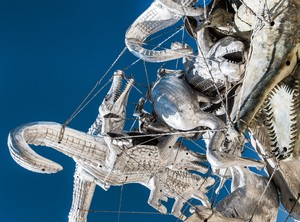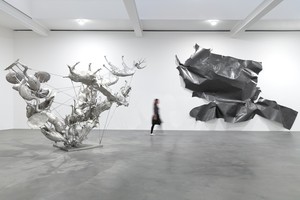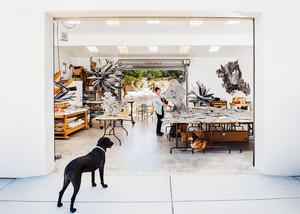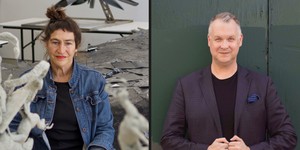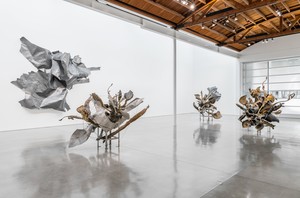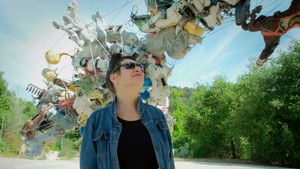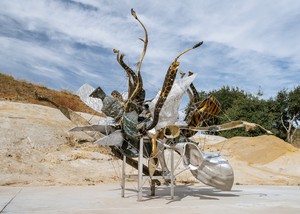I am interested in the balance, the engineering and tenuousness of the objects, as well as the dynamic tension and energy. . . . A continuum starts happening with one piece attached to another . . . the way that crystals or cells grow. I’m interested in the bigger picture.
—Nancy Rubins
Gagosian is pleased to present Diversifolia, an exhibition of new sculpture and drawings by Nancy Rubins. This is Rubins’s first solo exhibition in London.
Rubins transforms found objects and industrial refuse into expertly orchestrated abstractions that are fluid and rhizomatic in nature. Achieving this expressive fluidity at such a large scale requires precise engineering; in her recent work, she has employed a structural property called “tensegrity,” wherein individual parts are arranged in balanced compression and secured with tensile cables. Clusters of like objects—airplane parts, boats, carousel creatures, and more—seem to explode into space in all directions, propelled by their aggregated momentum.
In the scientific names of plants, “diversifolia” indicates a single species possessed with a considerable variety of leaf. Rubins’s sculptures, though devoid of leaves per se, are bouquet-like arrangements comprised of a wide range of animal forms—giraffes, storks, tortoises, crocodiles, wolves, and hogs—cast in iron, bronze, brass, and aluminum. Though easily recognizable for their intended use in garden decor or signage, Rubins treats the sculptures as purely formal, abstracted components: limbs and tails become flower-like Baroque arabesques in Hog de la Ivy (2016–17); tortoise shells create a cloud-like foundation from which rectangular bases and silvered hogs emerge; and the sharp antlers in Agrifolia Major (2017) give way to the animated curls of crocodile tails. Rubins also responds to the imperfections of the sculptural elements, their conspicuous seams and erratic welding influencing aesthetic and structural decisions such as where to place the drilled holes that allow the cables to zigzag through and bind the cantilevered components within the sculpture.
Reversing the scale relationship between sculpture and viewer, a selection of smaller maquettes cast in bronze and aluminum allow Rubins’s calculated compositional decisions to be observed all at once, impossible when circumnavigating the towering assemblages. From the sprawling sculptures to the large-scale graphite drawings—burnished swathes of paper undulating from the walls—Rubins suggests an endless continuum between the chaos and coolness of modernism and the élan vital of the organic.
